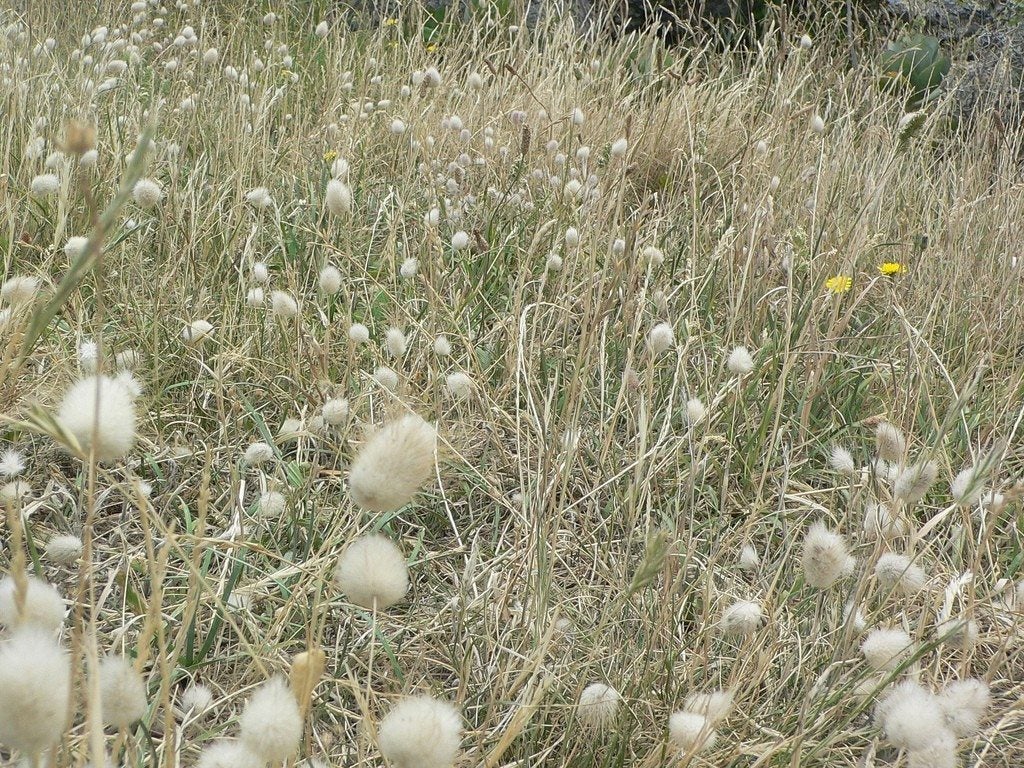Bunny Grass Plant Info: How To Grow Bunny Tail Grasses


If you're looking for an ornamental edging plant for your annual flower beds, take a look at bunny tail grass (Lagurus ovatus). Bunny grass is an ornamental annual grass. It has spiky inflorescences reminiscent of the furry cottontails of rabbits. This Mediterranean native is also called hare's tail grass or rabbit's tail grass. Growing ornamental bunny tail grass from seed is easy, but you may also purchase starts for quicker foliage and blooms. Learn how to grow bunny tail grass and add a little whimsy to containers, borders, and annual gardens.
Bunny Grass Plant Info
Bunny grass is a small, clumping grass with soft, ivory to white, oval flowers. They have a soft, touchable texture that is irresistible to both little and big hands. The blades are a soft, green color and 1 to 2 feet (31-61 cm.) long. Unlike many ornamental grasses, hare's tail grass has thin, bendable foliage. Bunny tail grass is a novice gardener's dream because it's so forgiving, and bunny grass plant info wouldn't be complete without noting its drought-tolerance.
It will thrive in the sandy soil that so many southern gardeners have to contend with, as well as any other well-drained type of soil. It loves lots of summer sun and deals with drought well, so it won't wilt if you forget to water it every day. The plant is perfect for xeriscapes, arid gardens, and neglected areas. The flowers are a cheerful addition to any annual garden for their texture and interest, and they can be dried for use in everlasting bouquets and craft projects.
How to Grow Bunny Tail Grasses
Ornamental bunny tail grass can be grown in most USDA zones in the United States, but it does best in the southern states in zones 8 through 11. This is a warm-season grass but performs well in the summer in cooler zones. The plant sprouts readily from seed and baby grasses can be thinned to give the stronger plants room to grow.
Sow seeds in full sun for best vigor but established plants can grow well in partial shade too. The plant favors sandy soil but will also thrive in loam. Grow patches of bunny tail grass by loosening the soil and digging in a layer of compost to help with drainage. If your soil includes a lot of clay, consider mixing in some sand. Rake the top of the bed smooth and sprinkle the seeds on top.
Cover the seeds with a sprinkling of soil and press the soil down with your hands. You can also grow them inside in flats and then transplant them when the seedlings have formed a clump. Space the plants 12 inches (31 cm.) apart for a sea of waving soft puffy flowers. In addition to sowing by seed, bunny tail grass can also be propagated by division.
Dig up the plant in late winter to very early spring. Cut the root ball in half, ensuring that the plant has several healthy blades. Replant the new grasses and keep them well moistened until they mature.
Sign up for the Gardening Know How newsletter today and receive a free copy of our e-book "How to Grow Delicious Tomatoes".
Bunny Tail Grass Care
Follow good bunny tail grass care once plants are mature. This plant is not fussy about much, but it does require moderate to bright light and well-drained soil. Water deeply and then allow the soil around the plant to dry out before further irrigation.
This grass doesn't like to have wet feet and the roots may rot if they are kept constantly wet. Bunny tail grass has few pest issues and is really only bothered by mildew diseases and moist conditions.
The plant does tend to self-seed and should have the inflorescences removed before they ripen. The creamy puffs add drama and softness to nearly any everlasting bouquet. Comb out dead and dying blades with your fingers to preserve the best appearance of this fun little grass. Bunny tail grass flowers can last up to 12 months as part of a dried flower arrangement.
Cut the stems near the base when loose pollen begins to form on top of the flowers. Gather a handful into a bunch at the base and tie a length of garden twine or cotton string around the base of these stems. Hang the bunches in a cool, dark, and dry place for two to three weeks, or until the stems snap when bent.
Your bunny tails will last for years in bouquets and arrangements. Share this lovely ornamental grass with other lovers of touch and visual sensation.

Bonnie Grant is a professional landscaper with a Certification in Urban Gardening. She has been gardening and writing for 15 years. A former professional chef, she has a passion for edible landscaping.